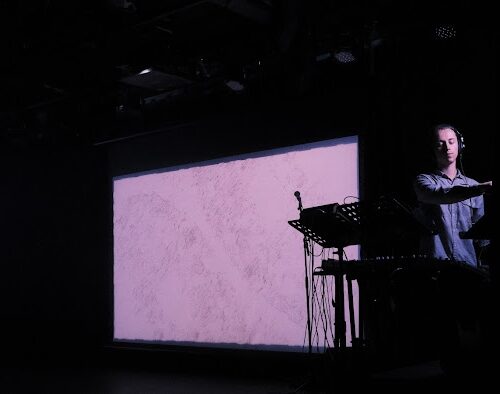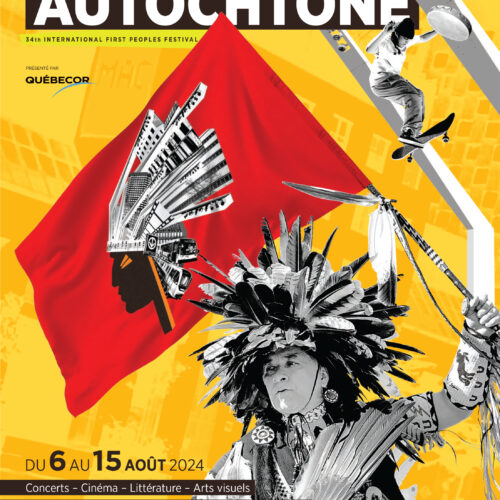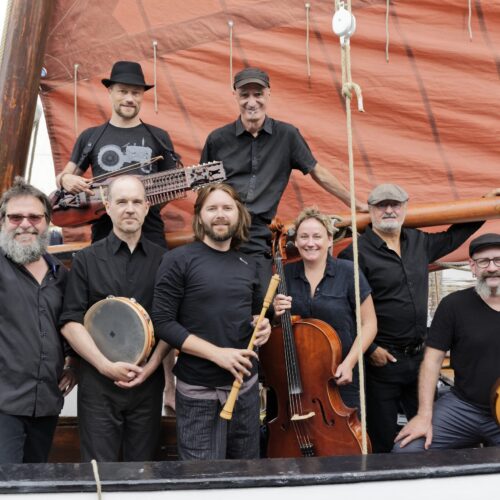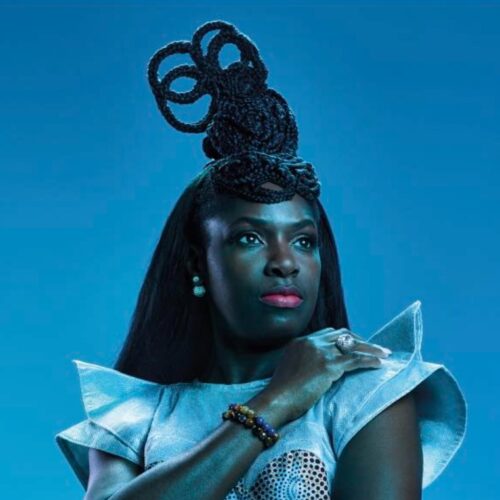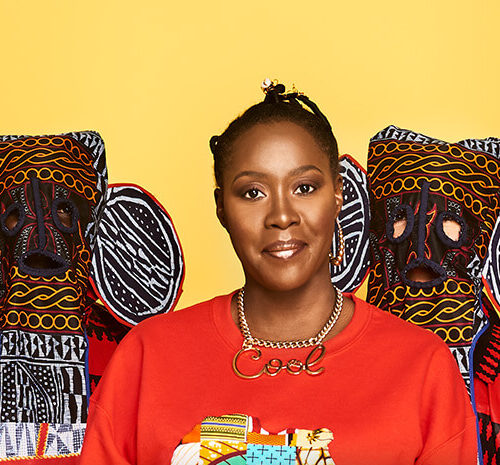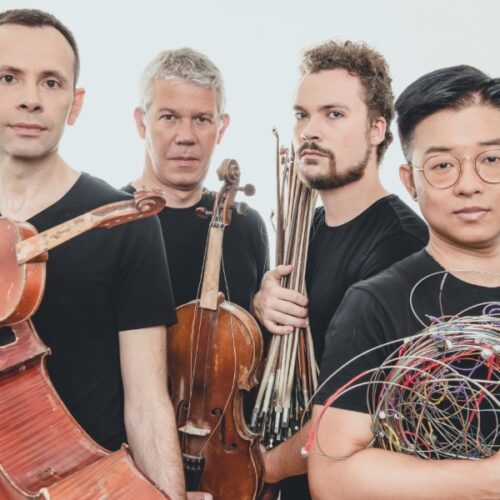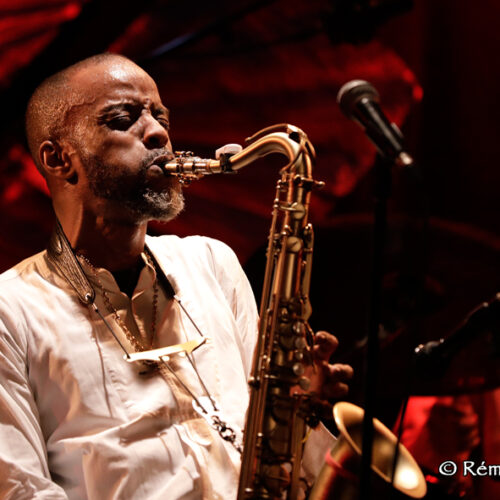Additional Information
JOYFULTALK is a multi-medium jazz extravaganza from the mind of Nova Scotian polymath Jay Crocker. The project involves massive visual installations, a staggering variety of live and recorded musicians, and sounds that you’d be hardpressed to find elsewhere. Just a month after the release of his newest work, an LP entitled Familiar Science, he’s starting his long journey across Canada to show off this batch of tunes. Starting in Ottawa tonight, he’ll be heading west, all the way to Vancouver, hitting up Suoni per il Popolo on June 14 before, and finishing with the Sweltering Songs Festival in Fredericton, NB on July 15th. As he begins his current tour, I got to chat with Crocker about his life, influences, cross-Canada move, new album, and much more.
PAN M 360: When I listen to Familiar Science, I heard a lot of varying but often pretty clear influences as to where your sounds may be coming from. What would you say are your personal influences that showed up on this album?
Jay Crocker: At the time, I hadn’t really explored the world of ’80s jazz before – some of the more outlier stuff. A good place to start for me was some of Ornette Coleman’s stuff from the later ’70s and early ’80s. I was listening to a lot of Steve Coleman, and lots of ECM (Records) stuff. Yeah know, lots of funny ’80s stuff. I think sometimes it gets a bad rap because of how it sounds – the production of it. It’s kind of an overlooked period of jazz.
PAN M 360: I heard some Chick Corea in there, maybe some John Zorn – some fusiony stuff.
Jay Crocker: Yeah, yeah, totally, definitely. The way we’re playing it live is getting into some pretty heavy fusion territory, which I’m totally fine with. It’s pretty fun and it’s something I’ve wanted to do for a while.
PAN M 360: The project that is JOYFULTALK would be pretty hard to narrow down to any particular genre. If you were to describe what kind of music you play to someone before they heard it, what would you say?
Jay Crocker: I would say that it’s jazz. I was trying to make a free jazz record but through my own lens and my own experiences. I think that constant exploration is more important than trying to stick to some form. I studied jazz and I was pretty heavy into the improvised music scene in Calgary before I left for Nova Scotia 11 years ago. When I moved out here, I moved to the country, so it was isolating. The last 7 years of my career have been a product of that isolation.
PAN M 360: Would you say that isolation is deliberate or at least self-imposed?
Jay Crocker: When (my family and I) moved out here, we wanted to have a house, and that wasn’t possible in Calgary. My partner and I needed a change. In Calgary I was playing with different musicians all the time, and after I moved I felt like I was really able to find myself and who I was in music. I was able to distill it down a bit more.
PAN M 360: The new album has a lot of sax and a variety of string instruments. Which ones did you play?
Jay Crocker: The sax playing on “Particle Riot” and “Hagiography” are samples from recordings I made about 15 years ago of a large ensemble I had. The player was a friend of mine who passed away. I got a few samples out of that. The other sax parts are done by a person out here who got me back into playing jazz. Her name is Nicola Miller. She played the alto and flute on this record.
PAN M 360: One of the songs has a long guitar lead, is that you?
Jay Crocker: Yeah, that’s me [laughs]
PAN M 360: So will the sax parts be played via samples when this is performed live?
Jay Crocker: Actually, this time I want to try to play the tunes, not the production if that makes sense. In Ottawa, I’ll have a sax player; in Montreal, I’ll have a violinist who will sit in for a few tunes. I want different musicians to be able to flow in and out of it. It’s a pretty jazz approach as far as the live stuff goes.
PAN M 360: Will the string quartet ever make another appearance with you live?
Jay Crocker: Before the pandemic, I had a whole tour planned with a string section in each city. It never happened but it will at some point.
PAN M 360: What is the primary synth that you use live?
Jay Crocker: It’s a modular synth, so I’m actually playing guitar and controlling the synthesizer with my guitar. Very Metheny, but maybe a little more stoned-out, a little more of a stoner rock vibe to it. With the modular, I can control the pitch and speed of my guitar, depending on what register I’m playing. So the higher I play on the guitar, the faster the tape (playback) is.
PAN M 360: Your new music video “Familiar Science” has some choreography. Was this your doing?
Jay Crocker: I had a friend come over and she did some improvised dancing while wearing a morph suit. I rotoscoped it all, took pieces, and looped it to create the choreography. Same kind of idea behind how the music is made: a physical interaction and then a digital manipulation, or sometimes vice versa.
PAN M 360: The name “Familiar Science” – what does it mean to you?
Jay Crocker: The idea is getting back to what is familiar to me. That’s why I reached out to a few of my old colleagues in Calgary, fellow improvisers that I came up with. Also, diving back into playing guitar and practicing a lot.
PAN M 360: What is a graphic score?
Jay Crocker: It can be whatever you want to use to create a different interpretation of what the music could be. The scoring system I use is something I developed called The Planetary Music System. It’s an elliptical system based on gearsets. The easiest example is probably like a 2:1 ratio. where one part is being played twice as long as the other. Imagine a circle where the diameter is 150cm. This could be a phrase of 150 quarter notes.
PAN M 360: I, therefore, have to ask, are you a fan of Steve Reich?
Jay Crocker: [laughs] Yeah, that kind of phased sound for sure. Harmony can build in different ways as the piece progresses, and it can even reach a point of no beginning and no end.
PAN M 360: Where in Nova Scotia do you live?
Jay Crocker: On the south shore. An hour and 15 minutes southwest of Halifax.
PAN M 360: How would you say Alberta compares to Nova Scotia?
Jay Crocker: [Audible cringe] There’s no comparison. I’m glad to be here, that’s for sure. [laughs] It’s really beautiful here. I’m close to the ocean, and at certain times of the year, especially around this time until late September, it’s kind of a paradise. When we moved out here, I was able to really find myself as an artist. I definitely would have come to a different place had I stayed in Alberta.


